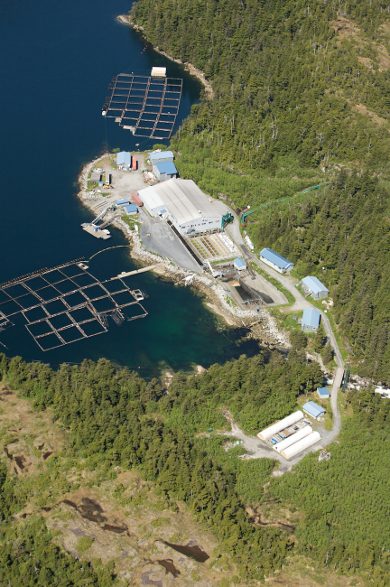Alaskan “farmed” salmon now outweigh “wild” by 2.5 to 1, and the blended commercial haul together makes up 14 percent of world-wild salmon supply, according to a new industry report.
Between 2011 and 2015, the last year for which good numbers exist, “salmon-farming” has grown 43 percent in parallel with record recorded wild-salmon harvests, write the McDowell Group’s authors in their report, The Economic Value of Alaska’s Seafood Industry. In that five-year span, the report holds, farmed-salmon production in America’s arctic state rose by 1.06 million tonnes.
“(Alaskan seafood) is highly regarded by consumers around the world, with demand for tasty, sustainable seafood generally increasing faster than production from wild fisheries and aquatic farms,” the authors wrote, adding, “A stronger U.S. dollar has led to lower prices over the past few years, but with continued market development and promotion, the prospects are excellent in the long-term.”
With farmed salmon volumes on the rise, the “volatility” otherwise associated with wild-catch volumes was noted in this report aimed at industry and state planners. SalmonBusiness found at least one major North American seafood distributor that was forced to alter business plans due to the sudden disappearance of “wild” supply.
“Due to biological and environmental factors, harvest of wild seafood is inherently volatile … total odd-year harvests of Alaska pink salmon can be double or triple even-years,” the report said. In reality, however, much Alaskan wild salmon is in fact raised in nurseries before being released into rivers and the Northern Pacific.
This report and others seem to suggest half of returning salmon have their origins in Alaskan hatcheries that are funded via “wild” catch.
The report also noted that the fisheries industry workforce — including fish-processing and farms — is comprised of “70 percent” non-residents. In all, about 24,000 workers become available to serve the state’s 169, largely remote, shore-based processing facilities carving out 33 percent of the first-wholesale value of all fish species produced (for salmon, this is USD1.36 billion).


